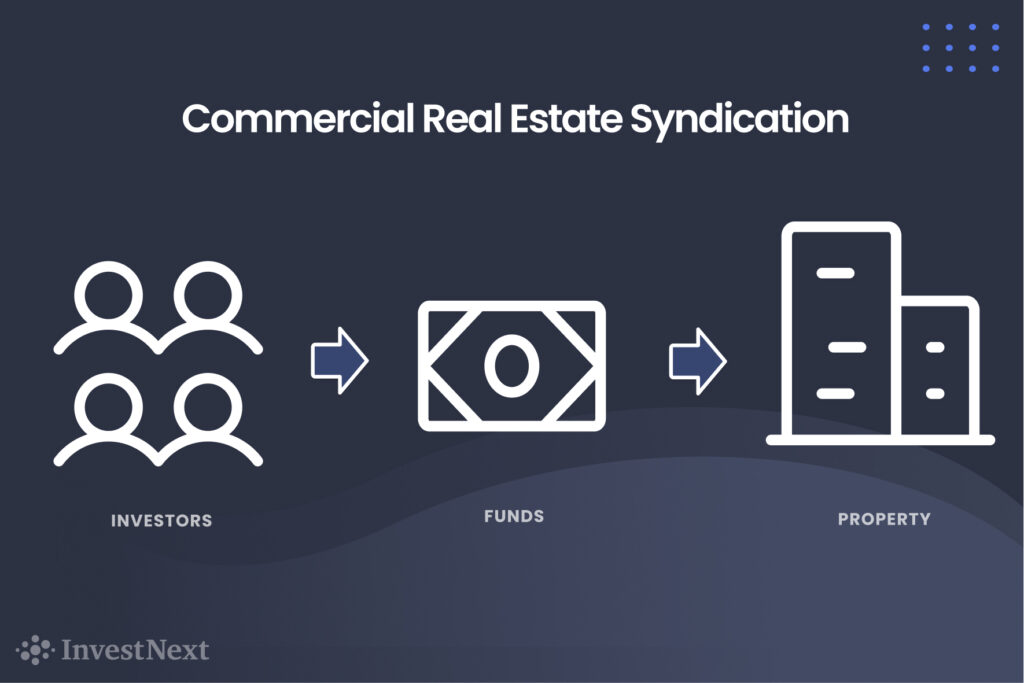You’ve heard of real estate investing, but have you ever considered the concept of real estate syndication? It’s a way for multiple investors to pool their resources together to invest in a property, project, or portfolio of properties that they might not have been able to afford on their own. This investment strategy has been around for decades, but it’s gaining popularity, especially among accredited investors.

Imagine being able to invest in a luxury high-rise building or a large-scale commercial property without having to put up the entire down payment yourself. Real estate syndication makes that possible. Here’s what you need to know about this investment strategy and how to get involved.
What is Real Estate Syndication?
Real estate syndication is a partnership between multiple investors who come together to invest in a property or project. The partnership is usually structured as a Limited Liability Company (LLC) or a Limited Partnership (LP), where one party (the general partner or sponsor) manages the investment and the others (the limited partners) provide the capital.
The general partner is typically responsible for finding and acquiring the property, securing financing, and overseeing the day-to-day operations. In return, they usually receive a management fee or a percentage of the profits. The limited partners, on the other hand, receive a share of the income and profits generated by the property, but they have no control over the operations.
Benefits of Real Estate Syndication
Real estate syndication offers several benefits to investors, including:
- Diversification: By investing in a syndicate, you can diversify your portfolio by investing in different types of properties or projects that you might not have been able to afford on your own.
- Reduced risk: Because multiple investors are involved, the risk is spread among everyone, making it lower for each individual investor.
- Increased purchasing power: With a group of investors pooling their resources together, you can afford to invest in higher-end properties or projects that might not have been possible otherwise.
- Passive income: As a limited partner, you can earn rental income or other forms of passive income without having to be actively involved in the day-to-day operations.
How to Get Involved in Real Estate Syndication
Getting involved in real estate syndication is easier than you think. Here are a few steps to follow:
- Define your investment goals: Before you start investing, you need to know what you want to achieve. Are you looking for passive income or long-term capital appreciation?
- Research the market: Look for a reputable sponsor or general partner who has experience in the type of property or project you’re interested in.
- Evaluate the investment: Review the investment opportunity carefully, including the property or project’s financials, location, and potential for growth.
- Consider your investment options: Look for investments that align with your goals and risk tolerance. Some investments may be more conservative, while others may be more aggressive.
- Review the terms and conditions: Before investing, review the terms and conditions of the syndicate, including the management fee, profit sharing, and exit strategy.
Popular Types of Real Estate Syndication
There are several types of real estate syndication, including:
- Equity syndication: This type of syndication involves investing in the equity of a property or project, where investors become shareholders and receive a share of the profits.
- Debt syndication: This type of syndication involves investing in the debt of a property or project, where investors receive interest payments on their investment.
- Crowdfunding: This type of syndication involves raising funds from a large number of people, typically through an online platform.
Real estate syndication is an attractive investment strategy for those looking to diversify their portfolio, reduce their risk, and earn passive income. By understanding how real estate syndication works and how to get involved, you can tap into the potential of this investment strategy and watch your wealth grow over time.





